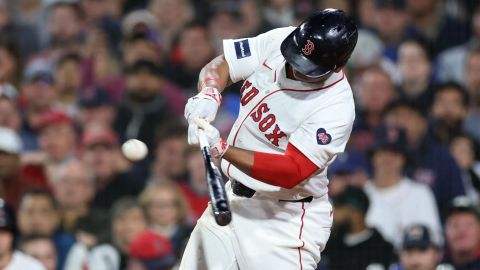 The last time I covered a game at Fenway Park, I spent some time in the clubhouses before ascending back up to the press box. Upon sitting down in front of my laptop, I overheard a conversation between two writers covering the Yankees.
The last time I covered a game at Fenway Park, I spent some time in the clubhouses before ascending back up to the press box. Upon sitting down in front of my laptop, I overheard a conversation between two writers covering the Yankees.
The talk was something along the lines of “How would you have liked to be the scout who drafted Mike Trout?” The second writer replied “You’d be out of a job now, but you’d be laughing at everyone from your chair at home.”
The Red Sox apparently thought they could get a leg up in that manner and have hired former Angels scouting director Eddie Bane — the man who drafted Trout but was fired before he got to see the phenom hit the major leagues — as a talent evaluator. With the Red Sox’ famous preoccupation with advanced metrics and statistical analysis, bringing Bane on board undoubtedly marks at least a subtle shift in the way Boston will assess players going forward.
In all fairness, Bane’s initial 2010 firing in Los Angeles (of Anaheim) was an odd situation. Tony Reagins had been at the helm of the Angels’ front office since 2007 — taking over for longtime general manager Bill Stoneman — but was under pressure from owner Arte Moreno after missing the playoffs in 2010 and for not having the kind of cohesive front office that Stoneman had run. The reasons for Bane’s firing are still up for interpretation — Reagins said he didn’t like Bane’s last couple drafts, while Bane claims him and the GM just didn’t get along personally — but either way, Bane likely took the fall for the pressure on Reagins.
“Tony and I don’t like each other,” Bane said at the time. “I don’t think
that’s a reason to get fired. Personality clashes are never any fun. I
don’t blame him for thinking I’m not the greatest guy in the world. He’s
not a guy I would want to hang out with. I’m sure he feels the same way
about me.”
The kicker with Bane is that his overall body of work was very, very impressive. In the years he worked (between 2004 and 2010) the Angels drafted and produced players like Trout, perennial Cy Young candidate Jered Weaver, and sluggers Kendrys Morales and Mark Trumbo. In contrast, it was the former scouting regime that was responsible for drafting busts like Dallas McPherson and Brandon Wood.
“Saying he didn’t like that draft was like a slap in my face, because those were really good drafts,” Bane said.
Whatever the reasons for Bane’s firing, one thing is clear: he is a talent evaluator of the old-school variety, not hung up on statistical metrics, but rather projecting a player’s future based on what he can physically see through the lens of his own baseball acumen. In that sense, Bane’s hiring with the Red Sox is likely a sign that the Red Sox’ are subtly tweaking the way they look at players going forward, creating a more balanced hybrid of Bill James analysis and conventional scouting methods.
Take the Oakland A’s, for instance, a team which constantly has to reinvent itself in an attempt to stay ahead of the cuve due to their low payroll. Although general manager Billy Beane may have been at the forefront of bringing Sabermetrics into mainstream baseball, it isn’t accurate to say that the A’s are a “Moneyball” team any longer — the undervalued trademarks of Moneyball are no longer undervalued. Rather, the A’s will take a bargain anywhere they can get it, and their foray into the international market and the raw skills of Yoenis Cespedes should say something about their approach towards player evaluation in the present day.
Mathematics have again taken a backseat to traditional scouting.
Now, this isn’t to say the Red Sox are abandoning their analytical approach. Rather, Boston is a big market ballclub which still has the money to field a team it believes is the most effective, not necessarily the most economical. And that’s certainly not to say that the organization doesn’t deploy scouts in a typical way; all ballclubs use some sort of hybrid of analytics and traditional scouting projection.
Nonetheless, Bane’s hiring likely indicates the same thing that the A’s have already noticed: scouting and taking gambles based on a player’s “tools” has become a market inefficiency, while players who ostensibly look good Sabermetrically may have become overvalued. Bane once gambled on Trout’s raw skills, and he may be out of a job in part because of it — but who’s having the last laugh?
Whatever the reasons the Red Sox brought Bane on board, they just added one of baseball’s most underrated and overlooked talent evaluators to their staff.



